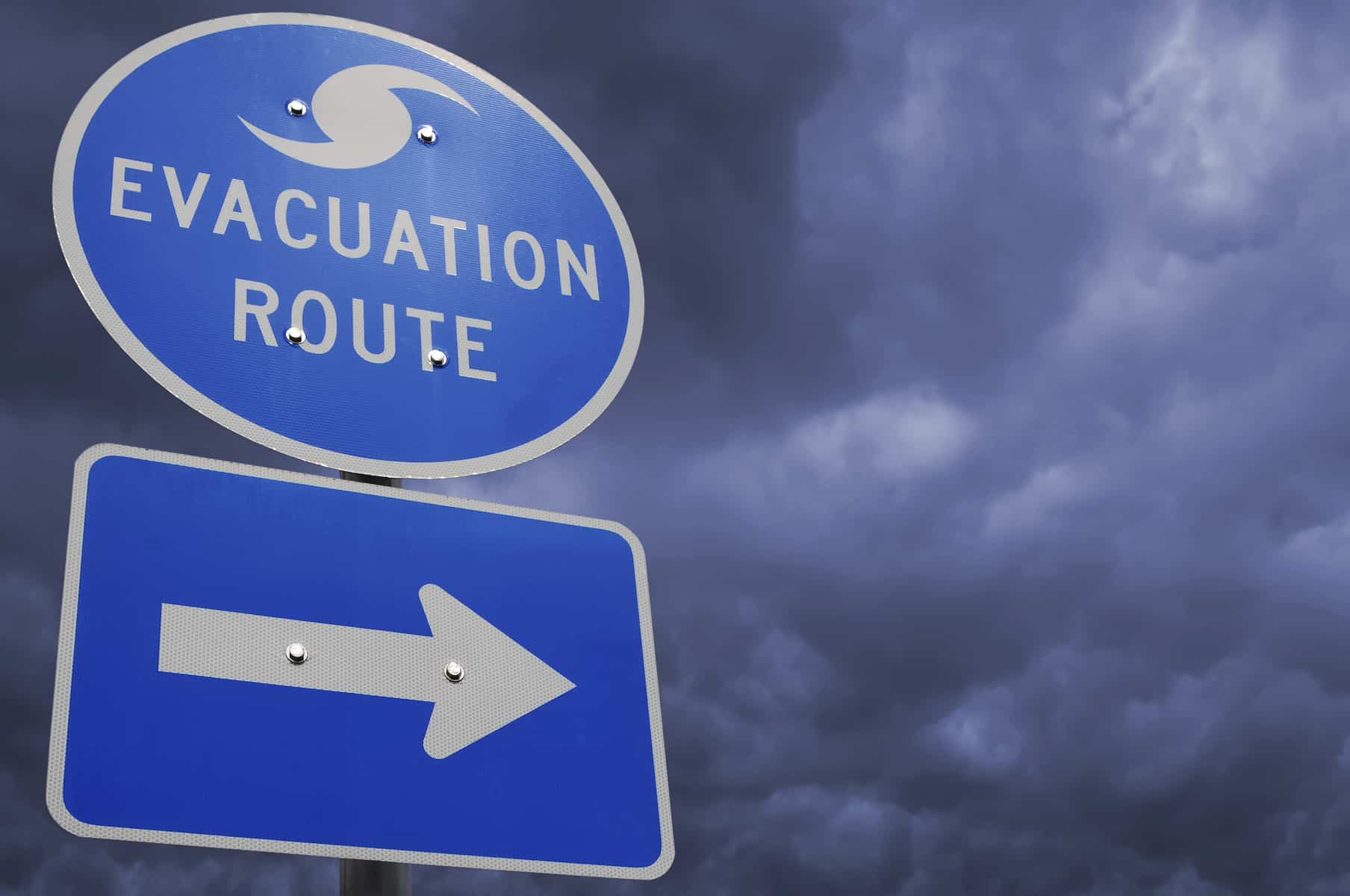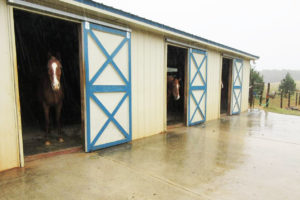Hurricane Preparation Tips for Horse Owners
Hurricane season is upon us, so horse owners should ready themselves in advance for evacuation or to weather a storm in place. Here’s what to remember.
Share
ADVERTISEMENT

Horse owners should ready themselves in advance for evacuation and other recommended hurricane preparedness tasks. | Photo: iStock
Before The Storm
- Have a disaster plan for your family including your animals and review and update the plan yearly (Saving the Whole Family is a useful guide from the American Veterinary Medical Association).
- Be sure your horse is current regarding vaccinations for tetanus and the encephalitis viruses (rabies, Eastern and Western equine encephalitis, and West Nile).
- Network a “plan” with the horse or farm animal-owning neighbors in your community (get to know your neighbors, plan a meeting, talk through different scenarios, and identify the local resources for dealing with disaster situations) and be prepared to help one another.
- Know your parish emergency managers (e.g., Sheriff, Animal Control). They are in charge during a disaster. For Louisiana residents, a list of emergency preparedness offices by parish is available online. If you’re unsure who to contact, an Internet search can help point you in the right direction.
- Be sure that your horse has two forms of identification somewhere on his body:
- Permanent identification, such as a microchip, tattoo, or brand; and
- Temporary identification, such as a luggage-type tag secured to the tail and halter (be sure to use a leather halter for break-away purposes). Fetlock tags are useful and can be acquired on-line or from a local farm supply store or you can use a paint stick or non-toxic spray paint. Be sure to place your name, address, and phone number (a phone number for someone out of state is best in the event of local phone outages) legibly on the tags.
- Store the record for the microchip number (typically the Coggins form) in an accessible location. It’s also recommended to have a second copy of this information with a family member or friend in another location (i.e., out of state) but where it can be easily accessible.
- Prepare a waterproof emergency animal care kit with all the items you normally use, including medications, salves or ointments, Vetrap, bandages, tape, etc. Place the kit in a safe place where you can easily access it after a storm.
- Clean up your property before the threat of severe weather arrives. Remove all debris that could be tossed around by storm- and hurricane-force winds.
Evacuation
- If you plan to evacuate in the event of a storm, have a destination and route(s) mapped out well in advance. It is important to evacuate your horses a sufficient distance from the coast.
- Locate any large animal shelters in your state well in advance of an emergency; January to March would be good months to prepare this plan.
- Try to leave a minimum of 72 hours before the arrival of the storm. The worst thing that can happen to you is to get stuck in traffic with a trailer full of horses and a hurricane approaching. Provide your neighbors with your evacuation contact information.
Weathering The Storm

- The choice of keeping your horse in a barn or an open field is up to you. Use common sense, taking into consideration barn structure, trees, power lines, condition of surrounding properties, and the likelihood of the property and structure to flood. Horses on farms subject to storm surge or flash flooding should be turned out so they don’t become trapped or drown.
- Remove all items from the barn aisle and walls, and store them in a safe place.
- Have at least a two- to three-week supply of hay (wrapped in plastic or a waterproof tarp) and feed (stored in plastic water-tight containers). Place these supplies in the highest (out of reach of flood waters) and driest area possible.
- Fill clean plastic garbage cans with water, secure the tops, and place them in the barn for use after the storm.
- Have an emergency barn kit containing a chain saw and fuel, hammer(s), saw, nails, screws, and fencing materials. Place this kit in a secure area before the storm hits so that it is easily accessible after the storm.
- Be sure to have an ample supply of flashlights and batteries and other non-perishable items.
- Listen to local radio stations in your area. If Internet access is available, access state-run websites that contain accurate status information (i.e., State Police, State University, State Department of Agriculture), and take all cautions/warning seriously and act accordingly.
After The Storm
- Start early to clean up your property and remove all debris that might have been tossed around by storm and hurricane force winds. Be careful of downed power lines that might be “live” and represent a danger to people and animals
Create a free account with TheHorse.com to view this content.
TheHorse.com is home to thousands of free articles about horse health care. In order to access some of our exclusive free content, you must be signed into TheHorse.com.
Start your free account today!
Already have an account?
and continue reading.
Share
Written by:
Edited Press Release
Related Articles
Stay on top of the most recent Horse Health news with
FREE weekly newsletters from TheHorse.com
Sponsored Content
Weekly Poll
Seek the advice of a qualified veterinarian before proceeding with any diagnosis, treatment, or therapy.
Copyright ©2024 Equine Network, LLC. All rights reserved. Reproduction in whole or in part in any form or medium without written permission of Equine Network, LLC is prohibited. THE HORSE, THE HORSE logo, THEHORSE.com and THEHORSE.com logo are trademarks of Equine Network, LLC.
© 2022 Copyright Statement dolor sit amet, consetetur sadipscing User Terms, sed diam nonumy eirmod tempor invidunt ut labore et dolore magna aliquyam erat, sed diam voluptua. At vero eos et accusam et justo duo dolores et ea rebum. Stet clita kasd gubergren, no sea takimata sanctus est Lorem ipsum dolor sit amet.
© Copyright 2022
Need to update your account?
You need to be logged in to fill out this form
Create a free account with TheHorse.com!
"*" indicates required fields















